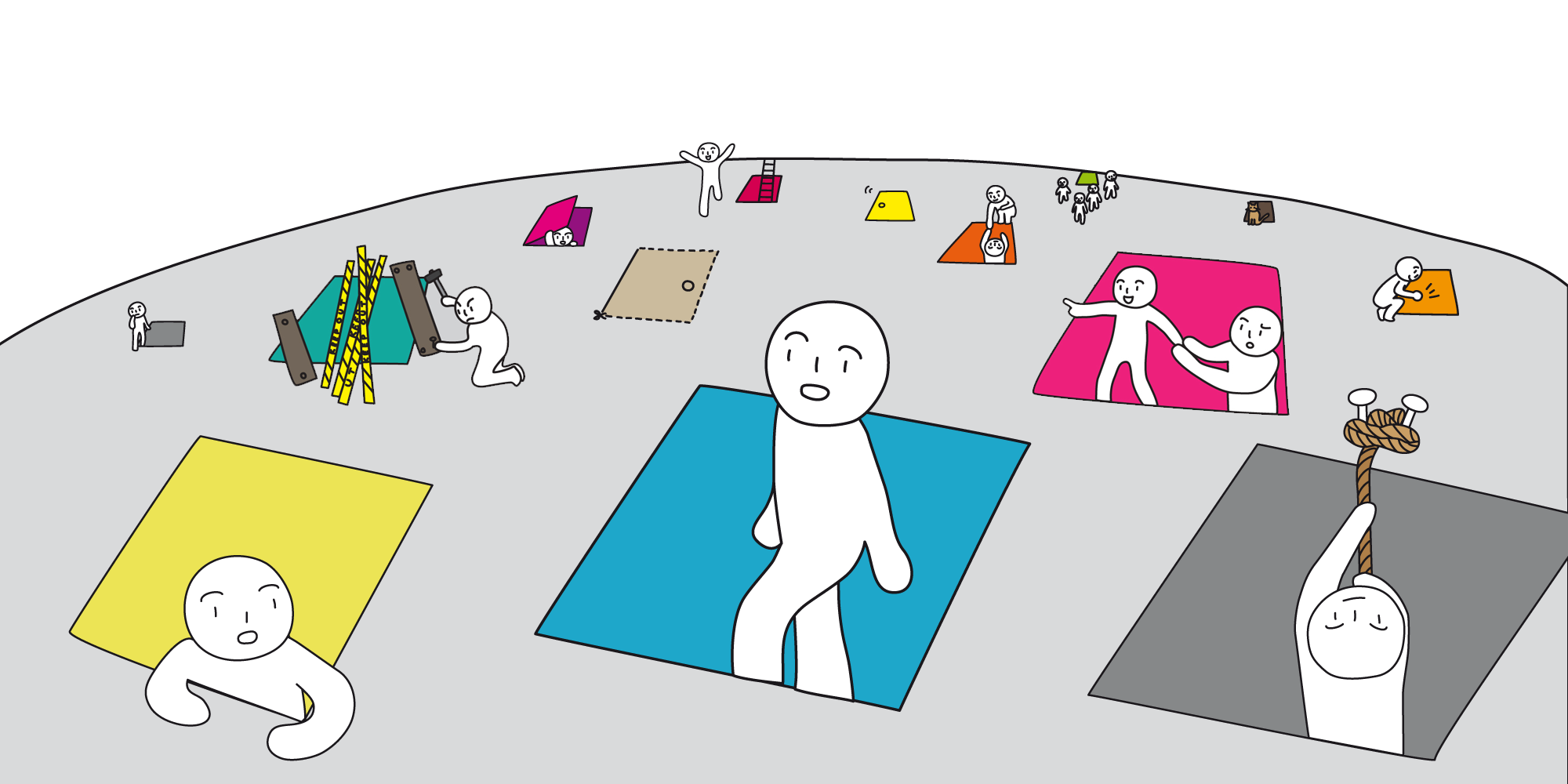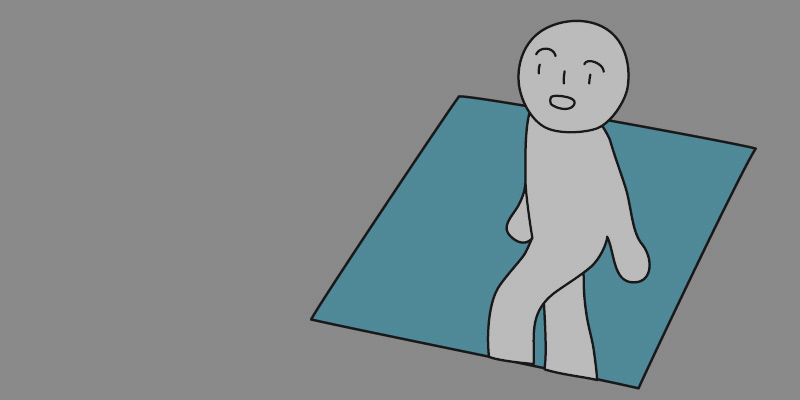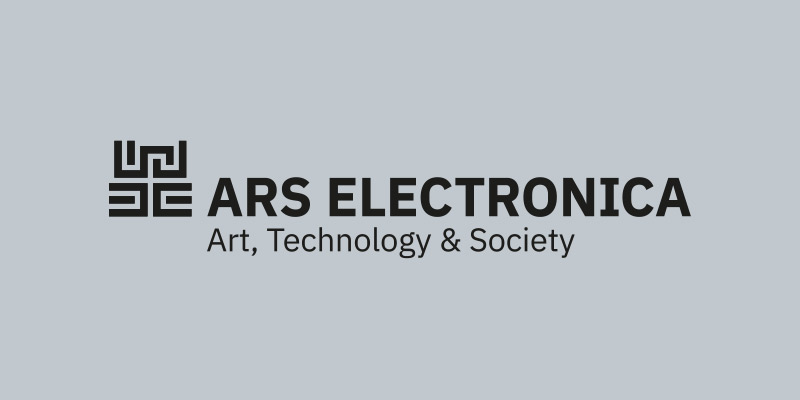Programm
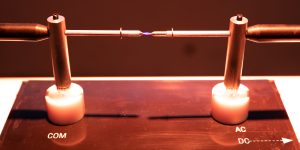
STAR VALLEY
Marko Peljhan (SI/US), Matthew Biederman (CA/US)
STAR VALLEY uses two spark-gap transmitters in dialogue, both controlled by a natural language processing AI algorithm trained on the US Department of Defense and NATO nicknames and descriptions of programs, activities, exercises and special access programs. The earliest form of wireless transmission is paired with contemporary computational developments to open a window onto the landscape of the accountability of secrecy.

The Generative Adversarial Network
Wesley Lee Yang (BR)
Democratization of technology and information has not been the means of liberation and empowerment as it could have been. As described and discussed by the Frankfurt School of Critical Theory, these developments have been co-opted to become mostly a means of commercial exploitation. These manipulation processes have moved from mass media to the internet and to the smart devices that are pervasive in our lives. Even when we don’t want them, it is impractical to function in society without owning and operating them. Adding insult to injury, not only are we exchanging our privacy, freedom and the health of our planet to devices that bring us convenience and comfort, but also doing it to have access to useless features, many of which create new problems for us—so that we will need or want the next “innovation.”

The Hudson
Maria Marshall (CH/UK)
Men in suits and ties carrying briefcases appear on the Hudson River and walk onto the beach and beyond the frame. Their clothes are wet. The same men appear with dry clothes and walk out of frame. The soundtrack is of a Trump speech about putting up the wall, sped-up to sound like Mickey Mouse. The soundtrack: Three of the same soundtracks are played at different intervals so that there will be a cacophony of sound, but audible wherever the viewer stands.

Infusing Empathy in Self Driving Cars Through Anime Expressions
Yuki Moriyama (JP), Eiji Kawata (JP), Ryohei Fukushi (JP)
In collaboration with Japanese animation studio Polygon Pictures, Mercedes-Benz has designed animations of different scenarios in which autonomous vehicles could build informed trust with humans. The basic idea when designing animes is that a lot of emotion is expressed in a few strokes. The key issue that this project concerns itself with is therefore: How can these basic principles be used for intuitive communication between human and machine?
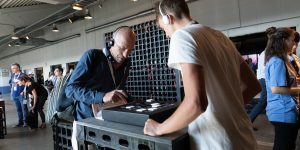
X+N
Hakan Lidbo (SE)
*X+N* is a board game where pieces and board re-build, split, morph, change size, shape and properties throughout the game.
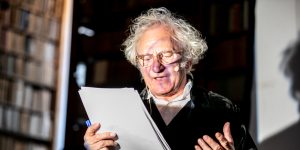
Walking Lectures: Calculated Sensation
Anthony Moore (UK/FR), Siegfried Zielinski (DE)
3 stations, 6 topics – Moore’s and Zielinski’s expanded lecture is an invitation to travel in a time machine: a move through the Deep Time of Acoustics and Hearing - between calculation, sensation and endless variants of the Art of Combination.
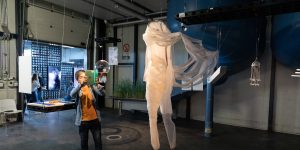
Space Exploration Initiative
MIT Media Lab (US), Xin Liu (CN)
In the past, the desire for exploration and expansion had a profound impact on how we imagined planetary futures. What shall we imagine now? In this exhibition, six projects from the Space Exploration Initiative of MIT Media Lab are asking the same question and bringing possibilities to the (im)possible space: All the projects were successfully deployed and performed in a zero-gravity parabolic flight last year. They are hopes beyond solutions, imaginations, more than facts.

Estuary Poem for Wyndham Lewis
Robert Montgomery (UK)
A memorial fire poem to Wyndham Lewis at the point where the River Thames, after leaving London, meets the North Sea. This work is both a ceremonial elegy to Lewis (an important figure in British Modernism and the editor of the concrete poetry journal BLAST) and an updating of his phrase “Enemies of the Stars” for the age of ecological crisis. It seems we have all in the age of ecological crisis become enemies of the icebergs and the stars…
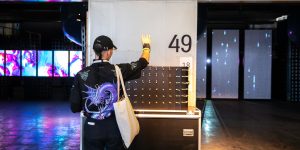
Groove – Motion as a Language
Studio 7.5 (DE)
This project investigates the communicative potential of reactive surfaces and focuses on the collaboration between humans and autonomous vehicles. The membrane perceives and reacts to the environment like a sea anemone. The aim of the project is to use these expressive possibilities to transmit processes and intentions of an autonomous system to the environment.
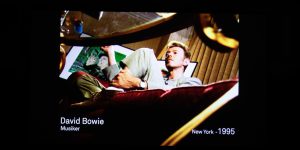
Why are we creative?
Hermann Vaske (DE)
Why are we creative? Does it run in our blood? Do we create in order to make ourselves immortal? Is it a reckless compulsion? Or is it simply a way to make a buck?
